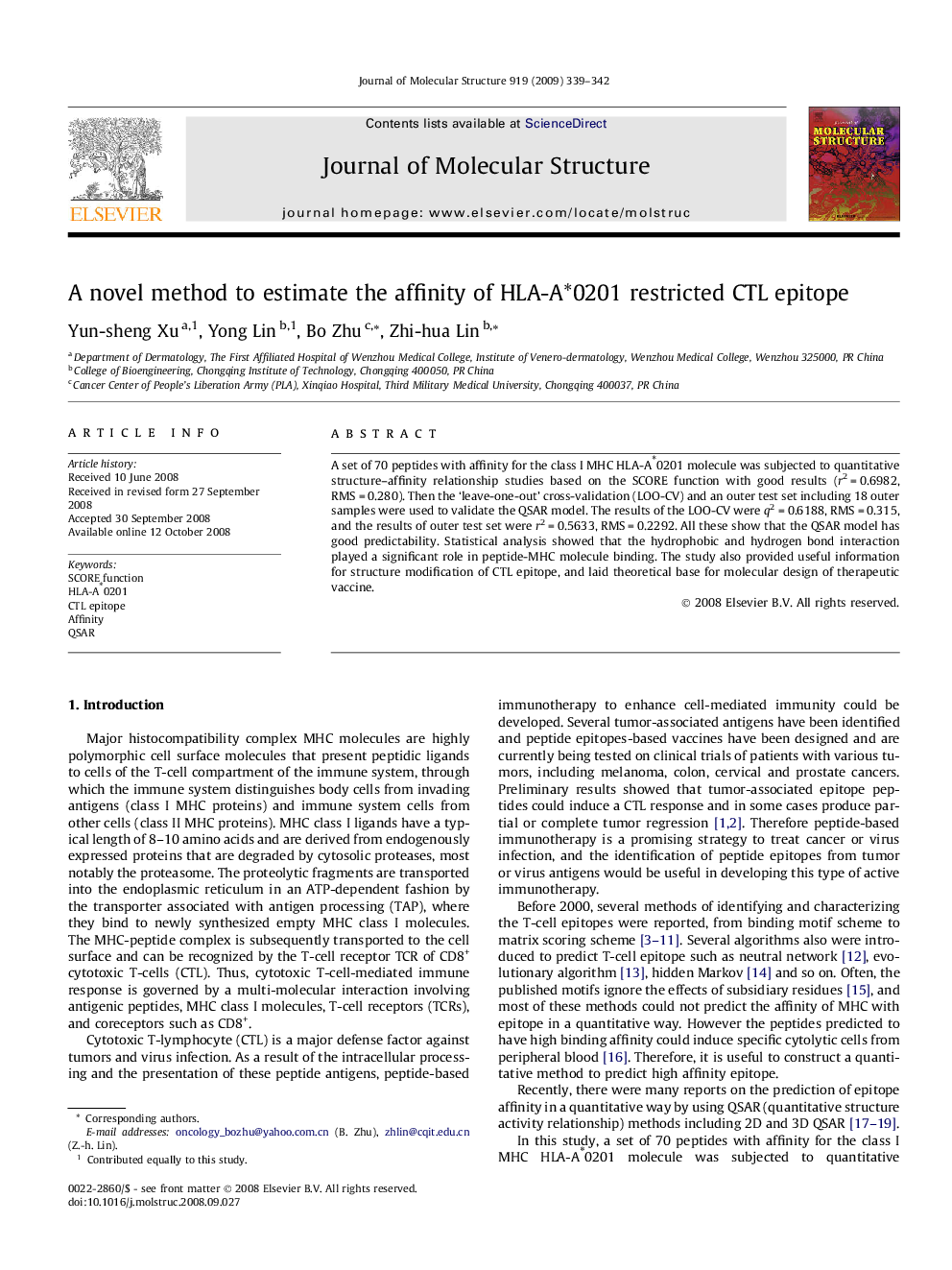| Article ID | Journal | Published Year | Pages | File Type |
|---|---|---|---|---|
| 1410468 | Journal of Molecular Structure | 2009 | 4 Pages |
Abstract
A set of 70 peptides with affinity for the class I MHC HLA-Aâ0201 molecule was subjected to quantitative structure-affinity relationship studies based on the SCORE function with good results (r2Â =Â 0.6982, RMSÂ =Â 0.280). Then the 'leave-one-out' cross-validation (LOO-CV) and an outer test set including 18 outer samples were used to validate the QSAR model. The results of the LOO-CV were q2Â =Â 0.6188, RMSÂ =Â 0.315, and the results of outer test set were r2Â =Â 0.5633, RMSÂ =Â 0.2292. All these show that the QSAR model has good predictability. Statistical analysis showed that the hydrophobic and hydrogen bond interaction played a significant role in peptide-MHC molecule binding. The study also provided useful information for structure modification of CTL epitope, and laid theoretical base for molecular design of therapeutic vaccine.
Related Topics
Physical Sciences and Engineering
Chemistry
Organic Chemistry
Authors
Yun-sheng Xu, Yong Lin, Bo Zhu, Zhi-hua Lin,
